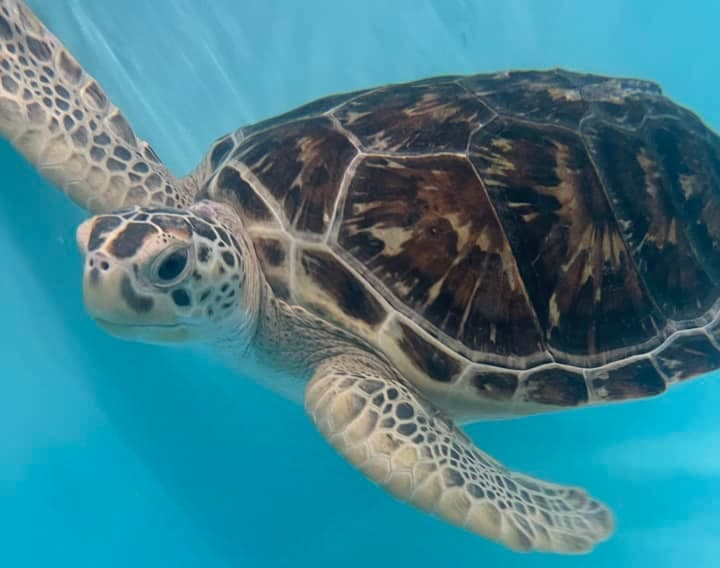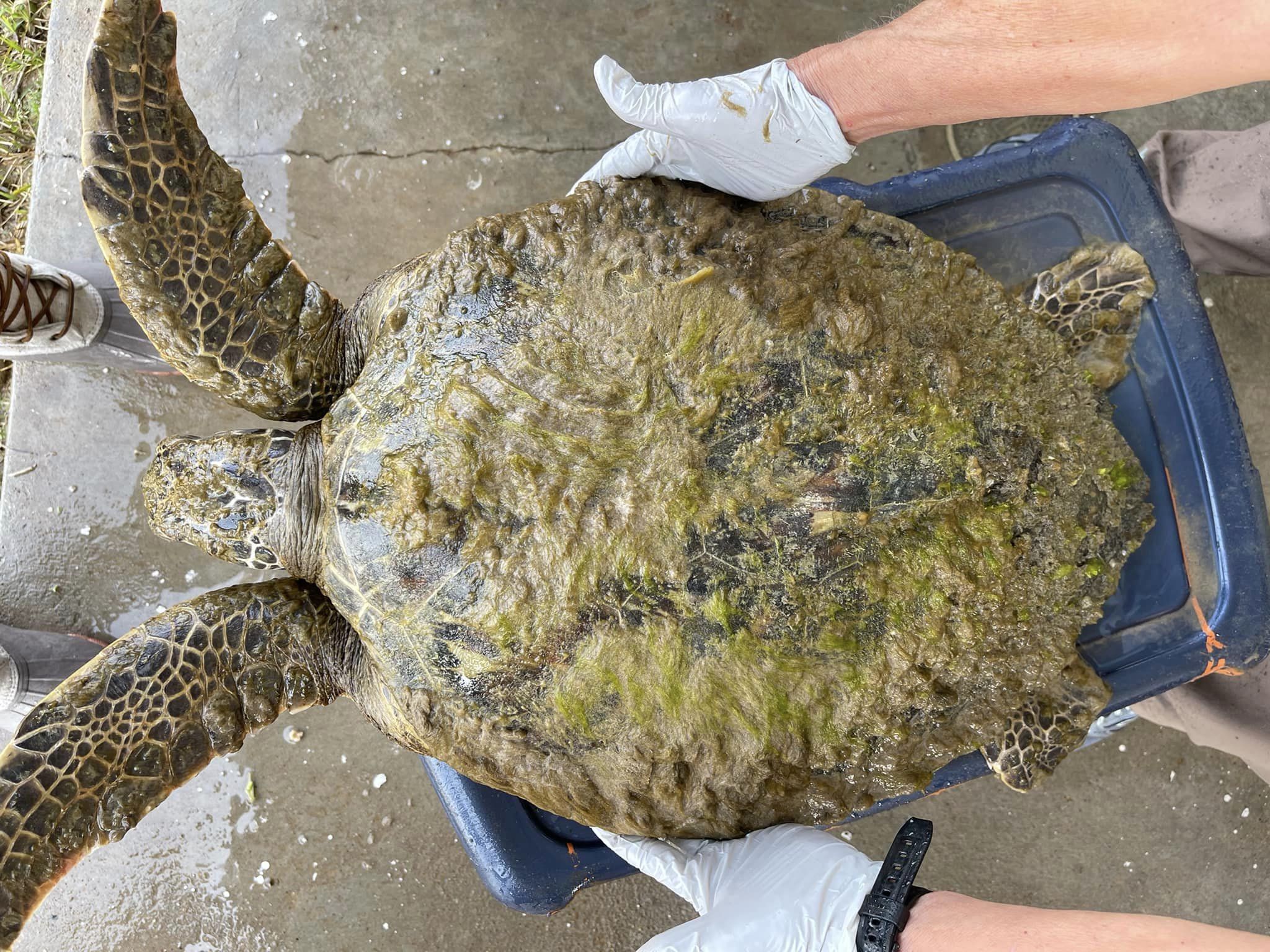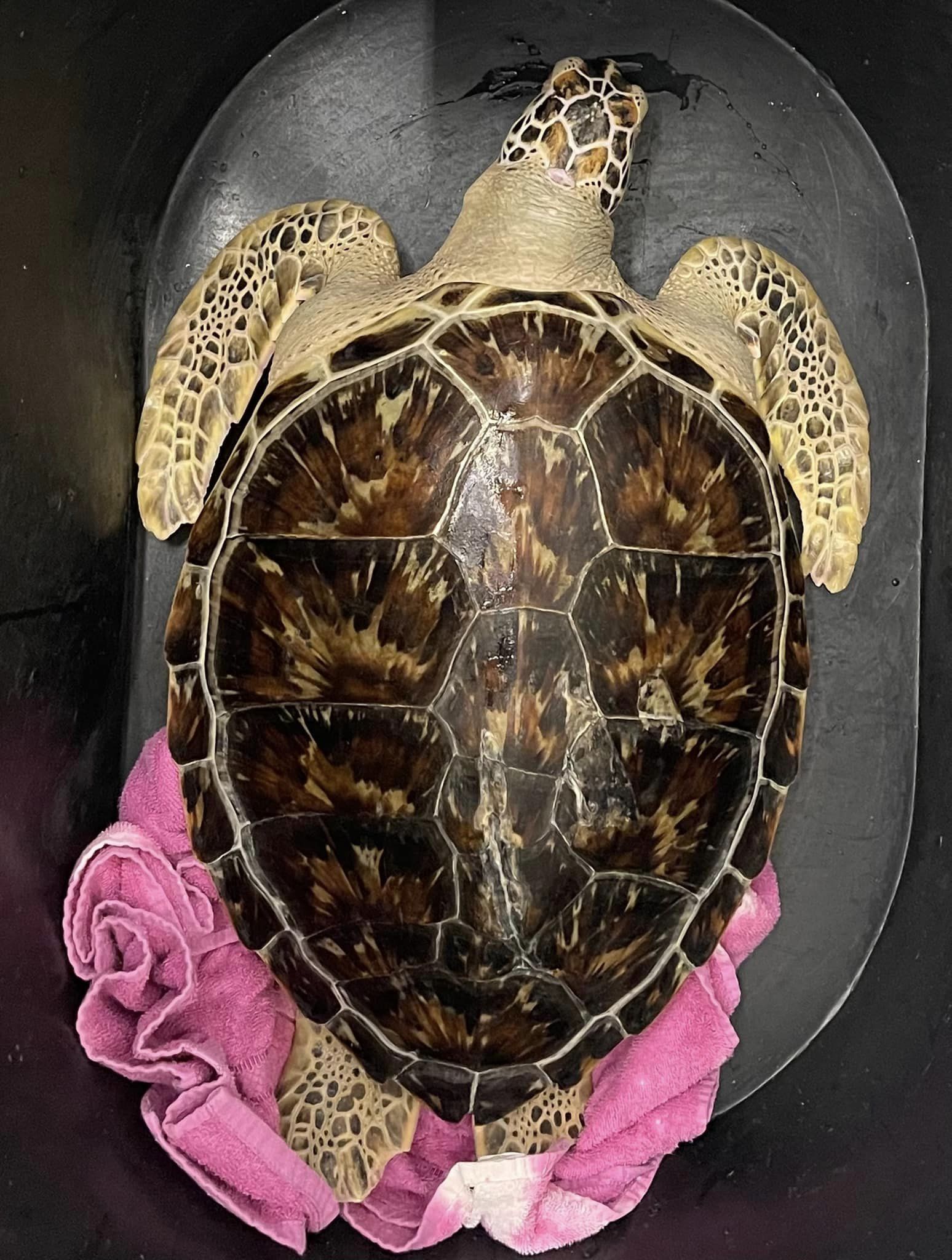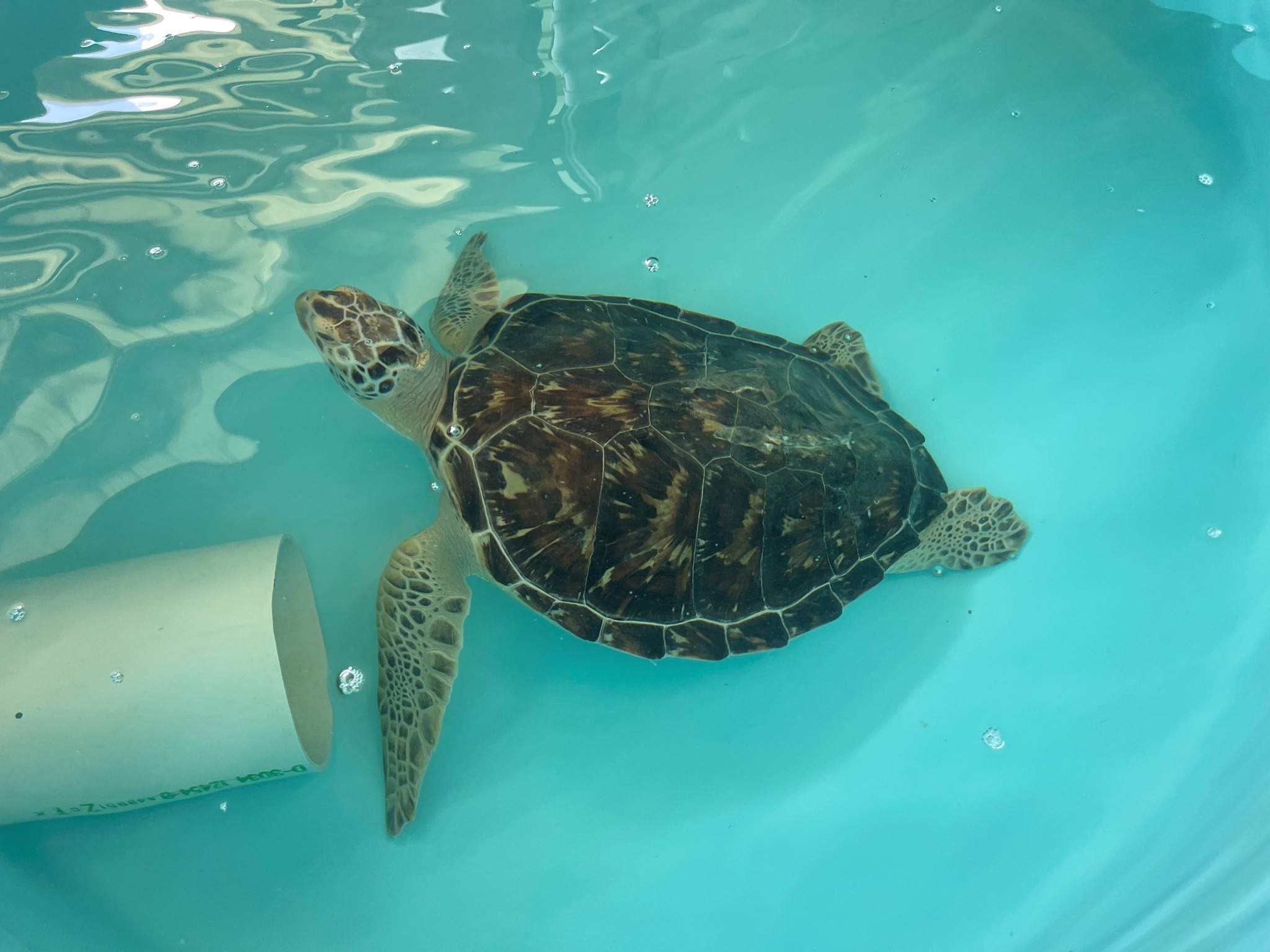Saving Sea Turtles: Slash's Story
December 8, 2022
Tweet
By Taylor Bounds, Content Specialist
This week, the Gulf Center for Sea Turtle Research celebrated its second anniversary. During their first two years, the Center cared for over 85 turtles, and volunteers spent thousands of hours focused on conservation efforts.
Meet Slash
In February, a juvenile green sea turtle was stranded on the west end of Galveston Island after experts believe he was hit by a propeller. He was rescued and brought to the Gulf Center for Sea Turtle Research, where he has been cared for ever since. With an injured carapace and infection, Slash has experienced a long road to recovery but is on the mend with the help of the volunteers, students, faculty and staff.
Now that Slash is healthier and recovering from his injury, he is scheduled for surgery to remove tumors caused by the fibropapillomatosis (FP) virus. The virus only occurs in sea turtles, and the tumors are benign. FP tumors are most common in juvenile green sea turtles like Slash. He is expected to fully recover with help from the veterinary surgical team at the Houston Zoo.
Although many rescued turtles are released back into the Gulf, because of his injuries from the propeller strike, Slash cannot return to the wild. Once he recovers from the FP tumor removal surgery, he will make his way to his new home at the San Antonio Aquarium, where he will have the care and resources he needs to thrive.



Why do sea turtles get stranded?
“Sea turtles strand for a number of reasons,” said Dr. Christopher Marshall, director of the Gulf Center for Sea Turtle Research and professor of marine biology at Texas A&M at Galveston.
When the water temperature drops below about 50°, sea turtles can become “cold stunned,” a coma-like state. Because sea turtles are reptiles, they depend on their environment to regulate their body temperature, so extended exposure to the cold water can be fatal.
Like Slash, sometimes sea turtles sustain injuries that they cannot recover from without human intervention. When this happens, the turtle will be evaluated and rehabilitated, and depending on the animal’s condition, will be released back into the Gulf. In cases like Slash’s, because of injury or the result of an illness, sea turtles deemed non-releasable will move to a permanent home, like the San Antonio Aquarium.
Sea turtles can strand due to illness. Earlier this year, sea turtles were stranded en masse on the shores of the Gulf of Mexico. While experts aren’t sure what is causing the sea turtles’ illness, these emaciated turtles are blown into the beaches and then, just like injured turtles, are rehabilitated by organizations like the Gulf Center for Sea Turtle Research.
Fishermen periodically catch sea turtles unintentionally. “We respond a lot to hook-and-line sea turtles from the fishing piers,” said Dr. Marshall. “We also respond a lot to sea turtles that just get entangled in monofilament line.” Sea turtles can also become tangled in other trash. Sometimes, sea turtles will swallow fish hooks–when this happens, they may be taken to the Houston Zoo, even straight from the beach, for surgery to remove the hook.
What should I do if I see a sea turtle in distress?
Call 1-866-TURTLE-5, the Texas sea turtle hotline, if you see a sea turtle in trouble or spot a nest. Sea turtles are a protected species by the United States government, so you shouldn’t handle sea turtles without permission to do so. This hotline and the monitoring done by Texas A&M at Galveston students gives injured or sick turtles a chance to be rehabilitated, protect nests, and allows for the collection of important biological data to help conservation efforts for this endangered species.
I want to help sea turtles. What can I do?
You can help support Gulf sea turtles and the Gulf Center for Sea Turtle Research by donating your time or money. Find out how below:
Donate directly to the Gulf Center for Sea Turtle Research online Donate directly to the Gulf Center for Sea Turtle Research online here.
Donate directly to the Upper Texas Coast Sea Turtle Hospital and Educational Outreach Center capital campaign fund here.
The Sea Turtle Rescue Team responds to any sick, injured, entangled, or dead sea turtle that washes up along the upper Texas coast. Before applying, please keep in mind that sea turtles are federally protected species and these activities require training and permitting. You can apply to volunteer here.
###
Media contact:More:
Read more about Health & Environment
Read more about Science & Technology
Read more about Marine Biology